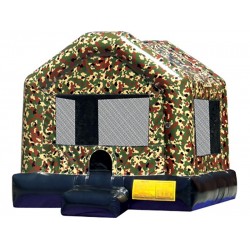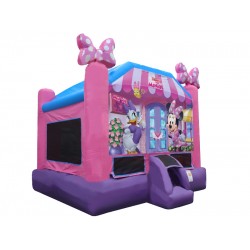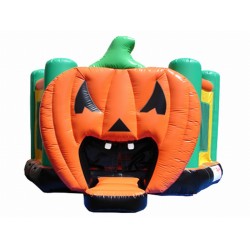How Do Different Inflatable Materials Affect the Durability of Bouncy Castles?

The durability of a bouncy castle is significantly influenced by the materials used in its construction. Different inflatable materials offer varying levels of strength, resistance to wear and tear, and overall longevity. Understanding how these materials impact durability can help in selecting a bouncy castle that meets your needs and withstands the rigors of frequent use. This article explores the effects of different inflatable materials on the durability of bouncy castles.
1. PVC (Polyvinyl Chloride)
PVC is a common material used in the construction of bouncy castles. It offers several advantages:
- Strength and Durability: PVC is known for its high tensile strength and durability, making it resistant to punctures and tears. It can withstand rough play and repeated use.
- Weather Resistance: PVC is resistant to various weather conditions, including moisture and UV rays. This helps prevent deterioration over time, even with outdoor use.
- Maintenance: PVC surfaces are relatively easy to clean and maintain, which contributes to the overall longevity of the bouncy castle.
2. Oxford Fabric
Oxford fabric is another material commonly used in inflatable structures. Its properties include:
- Lightweight: Oxford fabric is lighter than PVC, which can make the bouncy castle easier to transport and set up.
- Durability: While Oxford fabric is durable, it may not be as resistant to punctures and tears as PVC. However, it still provides a good balance of strength and flexibility.
- Cost: Oxford fabric is generally more cost-effective than PVC, making it a popular choice for budget-friendly options.
3. Nylon
Nylon is less commonly used but still offers some benefits for inflatable structures:
- Flexibility: Nylon is highly flexible and can be easily shaped into various designs. This flexibility allows for creative and custom shapes.
- Durability: Nylon is durable but can be more susceptible to wear and tear compared to PVC. It is often coated to enhance its resistance to moisture and UV rays.
- Maintenance: Nylon requires careful maintenance and may need periodic re-coating to maintain its durability.
4. Reinforced Vinyl
Reinforced vinyl is a heavy-duty material that provides extra durability:
- Enhanced Strength: Reinforced vinyl has a higher tensile strength and is designed to withstand more rigorous use. It is often used for commercial-grade bouncy castles.
- Resistance to Damage: This material is highly resistant to punctures, tears, and abrasion, making it ideal for high-traffic areas.
- Cost: Due to its high durability, reinforced vinyl is typically more expensive than other materials, but it offers long-term value.
5. Inflatable Material Comparison
When comparing different inflatable materials, consider the following factors:
- Usage Frequency: For frequent use, such as in commercial settings, materials like PVC and reinforced vinyl offer greater durability and resistance to wear.
- Environmental Conditions: Choose materials that are suitable for the specific environmental conditions in which the bouncy castle will be used. PVC is generally more versatile for varying weather conditions.
- Budget: If budget constraints are a concern, Oxford fabric provides a cost-effective option while still offering reasonable durability.
6. Conclusion
The choice of material significantly impacts the durability of a bouncy castle. PVC, Oxford fabric, nylon, and reinforced vinyl each offer different levels of strength, flexibility, and resistance to wear and environmental factors. By understanding these materials and their properties, you can select a bouncy castle that best suits your needs, whether for occasional use or frequent, high-traffic environments.



